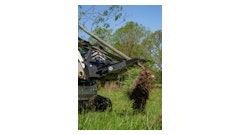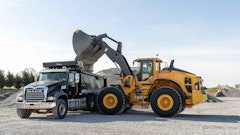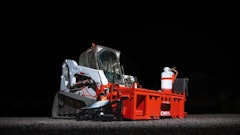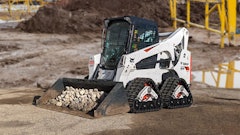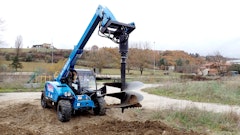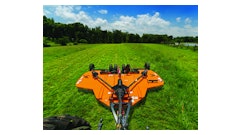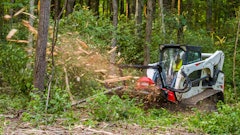
Like many pavement contractors, you probably use a variety of hydraulically powered attachments. Here are some tips to keep your hydraulics running smoothly.
- Inspect hoses daily. "If you have abrasion on the hoses where the outer coating starts to wear off, you start weakening or reducing the pressure capability of the hose, or the burst capability of the hose," says Rae Dell Braaten, Bobcat. "Leaks are the big thing from an environmental standpoint and if you have oil leaking, when it's not under pressure there could be dirt entering your hydraulic system."
- Avoid hose damage. Keep hydraulic hoses away from tires or other pinch points that could disrupt the flow of hydraulic oil.
- Keep quick couplers clean. "Almost all of the new quick couplers are flat and stay much cleaner, but whenever possible keep them out of the dirt," says Jim Koch, Sweepster Attachments, LLC. "If there is any visible dirt, wipe it off before you plug it in. If the couplers get really dirty you can use a solvent to clean them."
- Inspect quick couplers for wear. "Before you plug them in, inspect them for any worn areas," Braaten says. "When installed, you shouldn't be able to wiggle them back and forth."
- Change hydraulic fluids. Do this at recommended intervals to eliminate problems from condensation or contamination. Most manufacturers will recommend you do this every 250 to 500 hours.
- Change filters as suggested by your manufacturer. "I think everyone would rather err on the side of cleanliness — if your working conditions are particularly dirty, an example would be running an angle broom in a roadway and sucking dust in through the oil cooler, you want to make sure those cooling components are clean and follow filter change guidelines," Braaten says.
- Grease joints of moving parts. Greasing joints, as in the case of a combo bucket or grapple, reduces stress on the hydraulic cylinder.
- Make sure wear parts and cutting heads are in good condition and wearing evenly. On attachments such as planers or brooms this assures optimum performance from the attachment and eliminates stress to the hydraulic system.
- Make sure your oil has the correct viscosity. "Typically oils today can span a pretty wide temperature range," Braaten says. "But if you're working with a hydraulic breaker, for instance, they like you to operate the breaker for a period of time before you take it up to the full RPM — you want the oil to be somewhat warm so the breaker will operate at optimum efficiency."
- Match the attachment to the proper flow. Attachments are matched to specific hydraulic system sizes. "If the hydraulic system flow and/or pressure are too low, the attachment is not going to perform at the level you expect," Koch says. "If the hydraulic system flow and/or pressure are too high, components may be damaged on both the attachment and the prime mover, or the attachment may operate in an erratic fashion. Heat buildup from excessive flow or damaged seals from excessive pressure may result."
Companies in this article




